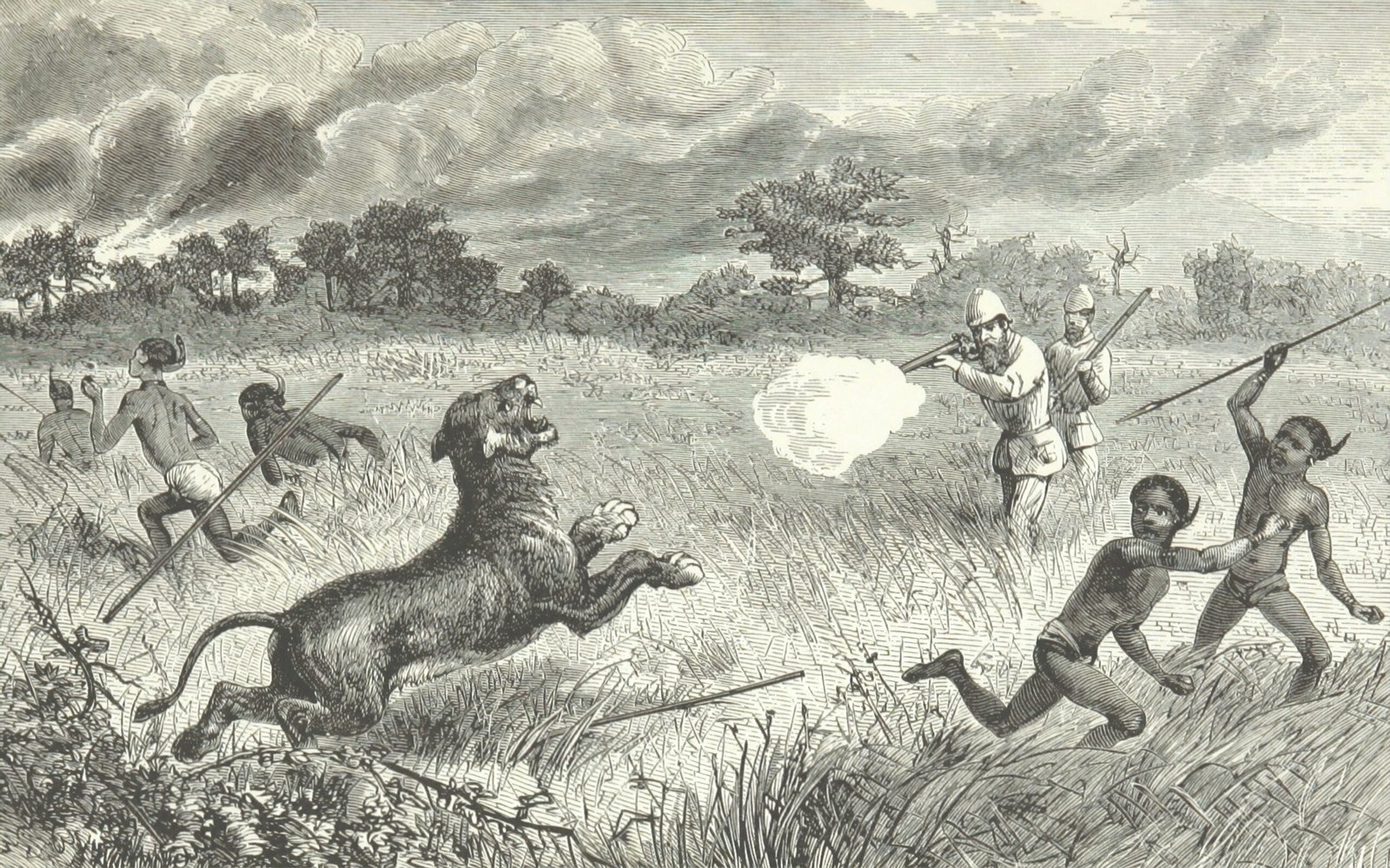The Romani people, also sometimes referred to as Roma, are a fascinating ethnic group with a rich history and unique culture. Unlike many established cultures, the Romani people have traditionally been nomadic, traveling from place to place for generations. Their origins trace back to northern India, and their journey westward over centuries is a story of cultural exchange, adaptation, and resilience.
Once Upon a Time in India
For centuries, the Romani people, often referred to as Gypsies, have captured imaginations with their vibrant culture and nomadic way of life. But where did they come from? Their story is one of a long and fascinating journey, unlike anything you might expect.
In the vibrant tapestry of Indian history lies a hidden thread, the story of the Romani people. Often referred to as “Gypsies,” theirs is a legacy of music, metalwork, and a life forever on the move. Let’s delve deeper into this fascinating, untold tale.

Why Do Women Get More Autoimmune Diseases?
Many people are familiar with autoimmune diseases, where the immune system mistakenly attacks healthy tissues. Interestingly, these conditions impact women significantly more than men. In fact, women are up to four times more likely to develop an autoimmune disease compared to men.
The Indus Valley Exodus: A Journey Westward
Contrary to popular belief, the Romani people’s origins trace back not to Egypt, but to the bustling Indus Valley civilization in northwestern India. Around 1,000 AD, shrouded in the mists of time, a group set out westward. Historians believe this exodus might have been triggered by invasions or political turmoil that destabilized their homeland.
Carrying Traditions Afar: Language, Music, and Craftsmanship
Wherever they wandered, the Romani people carried their unique heritage. Romany, their language, flowed like a secret river, connecting them across vast distances. Their musicality blossomed, captivating audiences with lively rhythms and soulful melodies. Skilled hands transformed metal, wood, and textiles into objects of beauty, a testament to their masterful craftsmanship.
Life on the Open Road: A Culture on Wheels
The Romani people traditionally embraced a nomadic life. Their colorful caravans, pulled by sturdy horses or adorned camels, were a familiar sight on ancient trade routes. This constant movement, however, often brought suspicion and prejudice. Settled communities viewed them with distrust, labeling them as outsiders.
Facing Challenges, Forging Identity
Despite the hardships, the Romani people displayed remarkable resilience. They clung to their traditions, their language a shield against assimilation. Their stories, passed down through generations, kept their history alive. Through music and craft, they not only survived but thrived, enriching the cultures they encountered.
A Scattered Legacy: The Romani People Today
Today, the descendants of those who left the Indus Valley are a scattered population. Communities exist across Europe, the Americas, and even back in their ancestral homeland, India. While some continue the nomadic tradition, others have chosen a more settled life. In recent decades, a growing movement for Romani rights and recognition has emerged, seeking to preserve their unique heritage and combat discrimination.
The story of the Romani people is a testament to the enduring power of culture. It’s a journey that began in the fertile plains of India and continues to unfold across continents. Their legacy lives on in the vibrant music, the intricate metalwork, and the spirit of a people who forever walk to the rhythm of their own drum.
From the Indus Valley to the Wide World
The Indus Valley civilization, flourishing in northwest India around 3300 BC, witnessed a remarkable exodus around 1000 AD. This wasn’t a mass migration, but a steady westward flow of a people who would become known as the Romani. Let’s unravel the details of this fascinating journey:
The Uncertain Spark: Why They Left
The exact reasons for their departure remain shrouded in mystery. Here are some leading theories:
- Political Upheaval: The Indus Valley faced political instability towards the latter stages. Invasions or internal conflicts could have disrupted societal structures, pushing some to seek new lands.
- Economic Strain: Climate change or resource depletion might have made the Indus Valley less hospitable. Seeking new pastures and trade opportunities could have been a driver.
- Social Change: Perhaps internal social shifts, like caste rigidity or religious conflicts, motivated some to break free and forge their own path.
While the specific cause is unknown, it’s clear that the decision to leave wasn’t taken lightly. The departing group likely consisted of skilled craftspeople, musicians, and storytellers – those who could adapt and thrive in a new environment.




Why Do Women Get More Autoimmune Diseases?
Many people are familiar with autoimmune diseases, where the immune system mistakenly attacks healthy tissues. Interestingly, these conditions impact women significantly more than men. In fact, women are up to four times more likely to develop an autoimmune disease compared to men.
The Long Road Westward: A Journey of Centuries
The journey wasn’t a single, linear path. It was a gradual westward movement spanning centuries. They likely followed existing trade routes, stopping for extended periods to trade, work, and replenish supplies. This gradual movement allowed them to absorb influences from various cultures, enriching their own traditions.
- Through the Mountain Passes: The Hindu Kush mountains likely presented a significant hurdle. They might have traversed through the passes in stages, spending generations adapting to the harsher climate and forging connections with local populations.
- Across the Iranian Plateau: The Iranian plateau offered fertile valleys and established trade routes. Here, they may have honed their metalworking skills, learning new techniques and incorporating them into their own craft.
- Into the Fertile Crescent: The fertile crescent, encompassing Mesopotamia and the Levant, offered opportunities for trade and cultural exchange. This region might have played a significant role in shaping their musical traditions, with influences from both Mesopotamian and Egyptian music.
This long journey wasn’t just geographical. It was a cultural evolution, shaping the Romani people into the adaptable and artistic society they are known for today.
In the next part, we’ll explore how the Romani people preserved their identity while embracing new influences, and the challenges and triumphs they faced as they spread across the world.
The Heart of Romani Culture
The Romani people weren’t simply wanderers; they were masters of specific crafts that ensured their survival and enriched the cultures they encountered. Here’s a closer look at the two pillars of Romani life: music and craftsmanship.
Music: The Soulful Symphony of the Romani People
Music wasn’t just entertainment for the Romani; it was the lifeblood of their culture. Their unique musical style, often featuring improvisation and intricate rhythms, drew inspiration from the various lands they traversed.
- Instruments of the Road: Portable instruments like the fiddle, lute, and tambourine were perfect companions for their nomadic lifestyle. These instruments allowed them to adapt their music to local tastes, incorporating elements of Persian, Arabic, and European folk music.
- Storytelling Through Song: Their songs weren’t just melodies; they were stories. Ballads recounted their history, their joys, and their struggles. These songs were passed down through generations, keeping their heritage alive even as they adapted to new environments.
- Masters of Performance: Romani musicians were known for their captivating performances. Their virtuosity, combined with their energetic stage presence, made them popular entertainers in courts, taverns, and village squares. Their music transcended language barriers, forging connections and fostering cultural exchange.
Craftsmanship: Transforming Metal, Wood, and Textiles into Works of Art
Romani craftspeople possessed a remarkable talent for working with various materials. Their skills weren’t just practical; they were artistic expressions.
- Metal Magic: Blacksmithing was a cornerstone of Romani craftsmanship. They created everything from tools and utensils to intricate jewelry and decorative objects. Their mastery of metalworking was evident in the intricate designs and the high quality of their work.
- Woodworking Wonders: Romani craftspeople were adept at woodworking, crafting furniture, carts, and musical instruments. Their ability to combine functionality with aesthetics is evident in their work, often featuring delicate carvings and intricate joinery.
- Textile Treasures: Romani women excelled in the art of textiles. They wove vibrant tapestries, embroidered clothing, and decorated tents. Their vibrant use of colors and intricate patterns were a hallmark of their work, reflecting the diverse influences they encountered on their travels.
These skills weren’t just a means of livelihood; they were a way of preserving their cultural identity. By incorporating local styles into their work, they created unique and beautiful objects that were both functional and artistic. Their craftsmanship not only ensured their survival but also earned them respect and admiration in the communities they visited.
The talents of Romani musicians and craftspeople were a big part of what allowed them to integrate into new cultures while retaining their own unique identity. In the next part, we’ll explore the challenges they faced as a nomadic people and how they persevered, shaping the world around them.
A Life on the Move
The Romani people’s defining characteristic has been their nomadic lifestyle. While romantic notions often surround a life on the open road, the reality was a constant struggle against suspicion and prejudice. Let’s delve deeper into the challenges and triumphs of this unique way of life.
The Challenges of the Open Road
For the Romani, life wasn’t a carefree adventure. It was a constant battle against uncertainty and societal barriers.
- Finding Acceptance: Settled communities often viewed the Romani with suspicion. Their nomadic lifestyle made them outsiders, difficult to trust and integrate. This distrust often led to discrimination and exclusion.
- Limited Resources: Constant movement meant limited access to resources like land, education, and healthcare. This made it difficult for them to accumulate wealth or establish themselves permanently.
- Prejudice and Persecution: Throughout history, the Romani people have faced persecution. False accusations of theft and sorcery fueled societal prejudice, making it hard for them to find safe haven.
These challenges were formidable, yet the Romani people displayed remarkable resilience. Here’s how they adapted and thrived:
- Strong Community Bonds: Their nomadic lifestyle fostered a strong sense of community. Families relied on each other for support, sharing skills and resources. This close-knit network provided a crucial safety net in a hostile world.
- Adaptability and Resourcefulness: Constant movement honed their survival skills. They learned to adapt to different environments, finding new sources of income and integrating with local cultures.
- Cultural Preservation: Their traditions, language, and music became a shield against assimilation. By clinging to their heritage, they maintained a sense of identity even as they moved from place to place.
The Romani people weren’t simply passive victims of circumstance. They actively shaped their environment. Their musical performances and craftsmanship brought joy and beauty to the communities they visited. They acted as cultural brokers, introducing new ideas and fostering exchange between different societies.
The Romani Today
The descendants of those who left the Indus Valley centuries ago are a scattered population today. Numbering around 10 million globally, with communities across Europe, the Americas, and even India, the Romani people continue to navigate the world with resilience and a rich cultural heritage. Let’s explore their current realities and ongoing struggles.
Settling Down or Continuing the Move?
The traditional nomadic lifestyle continues for some Romani groups, particularly in Eastern Europe. However, many have chosen to settle in villages and cities, seeking better access to education, healthcare, and employment opportunities. This shift presents both opportunities and challenges.
- Integration and Discrimination: Settled Romani communities often face social and economic marginalization. Prejudice and discrimination can limit access to housing, education, and employment, creating a cycle of poverty and exclusion.
- Preserving Traditions: Settling down can make it harder to maintain traditional ways of life. Language, music, and storytelling practices might face dilution as younger generations integrate into mainstream society.




Why Do Women Get More Autoimmune Diseases?
Many people are familiar with autoimmune diseases, where the immune system mistakenly attacks healthy tissues. Interestingly, these conditions impact women significantly more than men. In fact, women are up to four times more likely to develop an autoimmune disease compared to men.
The Fight for Recognition and Rights
In recent decades, a growing Romani rights movement has emerged. Organizations advocate for social inclusion, cultural preservation, and legal recognition. Their efforts are focused on:
- Combating Discrimination: Raising awareness about discrimination and promoting policies that ensure equal opportunities for Romani people is a key objective.
- Cultural Preservation: Supporting initiatives that preserve Romani language, music, and traditions is crucial for maintaining their unique identity.
- Education and Empowerment: Ensuring access to education and promoting entrepreneurship within Romani communities are essential for breaking the cycle of poverty and achieving social mobility.
The Romani people’s fight for recognition is ongoing, but there have been significant advancements. The European Union recognizes the Romani people as a minority group and has established programs to promote their inclusion.
A Legacy that Endures
The story of the Romani people is a testament to the enduring power of culture. Despite centuries of hardship and prejudice, they have held onto their traditions, enriching the world with their music, craftsmanship, and spirit of resilience.
Their legacy lives on not just in their vibrant cultural expressions but also in the fight for equality and the celebration of diversity. As the Romani people continue to navigate the 21st century, their story serves as a reminder of the importance of cultural preservation, social inclusion, and the enduring human spirit.






The Untold Story of the Romani People
Unveiling the mystery of the Romani people, often called Gypsies. Explore their vibrant story - from their surprising origins in India to their westward journey as skilled craftspeople and captivating musicians. Discover how they persevered as a nomadic people and the fight for recognition today.